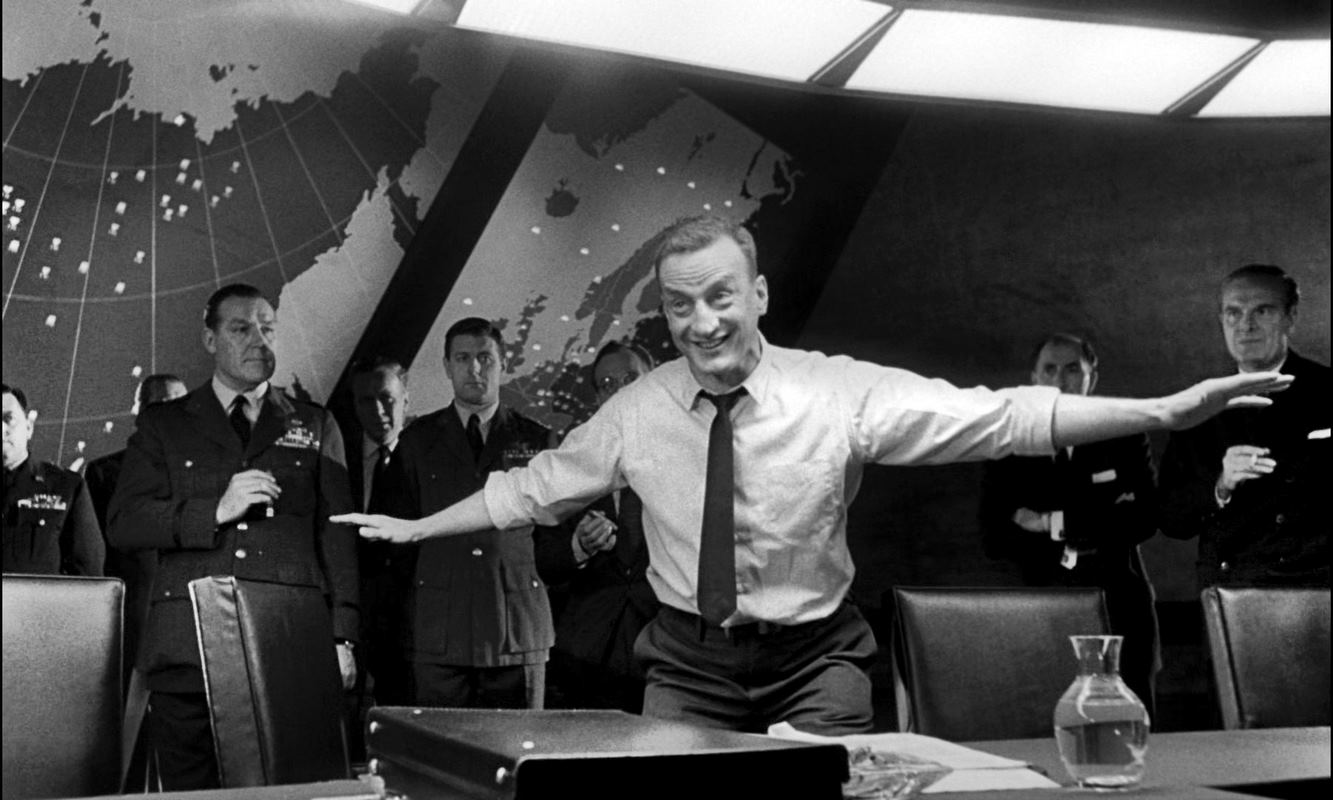60 years ago today, the iconic black comedy film Dr. Strangelove, premiered in American cinemas. Directed by the genius Stanley Kubrick, the film was terrifying in a new way, because of its seemingly accurate depiction of America’s hair-trigger nuclear war defense plans, which were later revealed by whistleblower Daniel Ellsberg and others. In fact, Ellsberg recounts in his book Confessions of a Nuclear War Planner, that he emerged with his closest friend from the darkness of the cinema into the light of a San Diego afternoon dazed and confused, thinking “how could Kubrick have gotten it so right?” READ more about this monumental film… (1964)
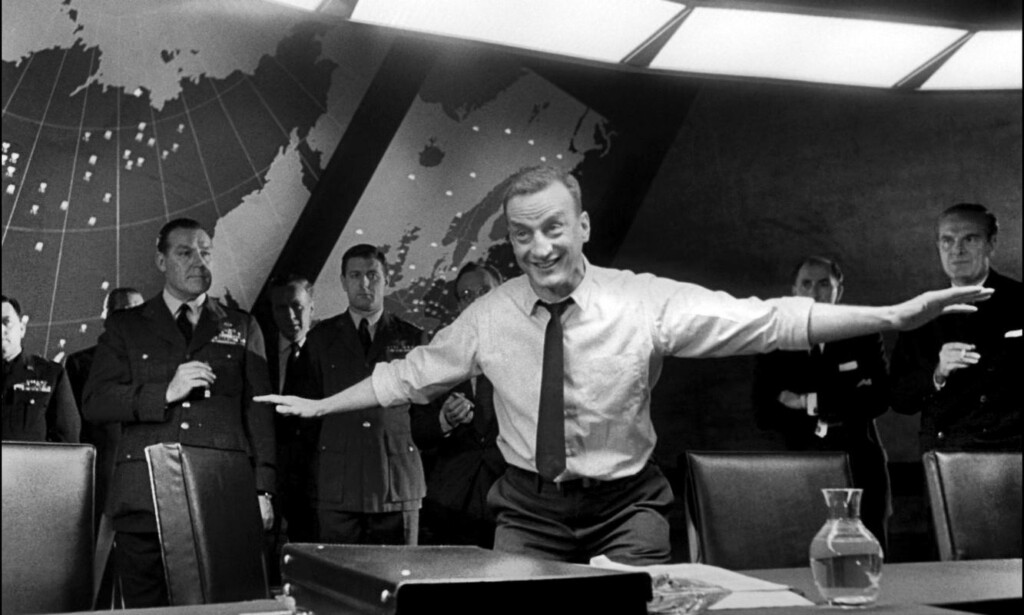
The film’s full title is Dr. Strangelove: Or How I Learned to Stop Worrying and Love the Bomb, and it depicts a nuclear standoff between the Russians and Americans during the height of the Cold War. Several real-world characters on the American side were depicted as exaggerated versions of themselves, such as the cigar-chomping Air Force colonel, “Jack D. Ripper” as a parody of Air Force General Curtis LeMay.
“My idea of doing it as a nightmare comedy came in the early weeks of working on the screenplay. I found that in trying to put meat on the bones and to imagine the scenes fully, one had to keep leaving out of it things which were either absurd or paradoxical, in order to keep it from being funny,” Kubrick explained.
What he did, and it’s partially why the film was so critically acclaimed, was simply put back in the absurd and the paradoxical, and enjoy watching the excellent cast grapple with it. It has been called the greatest political satire of the century.
MORE Good News on this Date:
- W. C. Fields, the comedic actor was born in Philadelphia, Pennsylvania (1880) (1942)
- Sleeping Beauty, Walt Disney’s animated feature fairy tale, premiered (1959)
- The first direct commercial flights from mainland China to Taiwan since 1949 (2005)
- The Supreme Constitutional Court of Egypt ruled that people who do not adhere to one of the three government-recognized religions are still eligible to receive government identity documents (2009)
51 years ago today, the beginnings of the World Heritage Convention that would ultimately become UNESCO was established through an international agreement to pay for and conserve Borobudur, a 9th-century Buddhist Temple in Indonesia. The largest Buddhist temple on Earth, the Borobudur project was the first to have involved the use of modern techniques for monument conservation.

The Agreement Concerning the Voluntary Contributions to be Given for the Execution of the Project to Preserve Borobudur: dated Paris, 29th of January, saw 5 countries agree to contribute to the restoration: Australia (AUD $200,000), Belgium (BEF fr.250,000), Cyprus (CYP £100,000), France (USD $77,500) and Germany (DEM DM 2,000,000).
In 1975, the actual work began. Over one million stones were dismantled and removed during the restoration, and set aside like pieces of a massive jigsaw puzzle to be individually identified, cataloged, cleaned, and treated for preservation. Borobudur became a testing ground for new conservation techniques, including new procedures to battle the microorganisms attacking the stone.
After the renovation was finished, UNESCO listed Borobudur as a World Heritage Site in 1991. (1973)
77 years ago today, Desert Island Discs first aired on BBC radio when Roy Plomley asked a guest, called a ‘castaway’, to choose eight recordings (along with a book and luxury item) that they would take if they were to be stranded on a desert island. Now celebrating a quarter-less than a century of airtime, today’s host Kristy Young interviews iconic Brit David Beckham, while the BBC website features plenty of additional multi-media content like the funniest desert island discs, or what the most picked piece was. It’s now the longest-running UK radio show with more than 3,000 episodes recorded. 
British broadcasters have voted it as the greatest-ever radio show in the country. The original host Roy Plomley was incredibly strict with the rules, which stated that guests choose one luxury, which must be inanimate and of no use in escaping the island or allowing communication from outside. Guests are automatically given their preferred religious text, and the complete works of William Shakespeare. Because in 1942 there were only gramophone recordings, to this day guests are required to select a single piece (Comfortably Numb) rather than a whole record (The Wall).
Future hosts have relaxed these rules, occasionally allowing pets, and in the case of John Cleese, the show’s third host Sue Lawley allowed him to take his Monty Python co-star Michael Palin with him, on the condition that he was dead and stuffed.
Over the show’s first 60 years, Beethoven’s Ode to Joy was selected most often, although a more recent poll found The Lark Ascending as the most requested piece by castaways, perhaps, as Dame Judy Dench points out, because if its essential Englishness. It has since spawned duplicate programs such as one in Houston, and another in the state of Maine. It also remains an extremely good game at parties. LISTEN to Judi Dench explain the reason behind the most-requested disc. (1942)
On this day in 1936, the Baseball Writers’ Association of America inducted the first players into the Baseball Hall of Fame:
Ty Cobb, Babe Ruth, Honus Wagner, Christy Mathewson and Walter Johnson. The National Baseball Hall of Fame and Museum in Cooperstown, New York would open three years later.
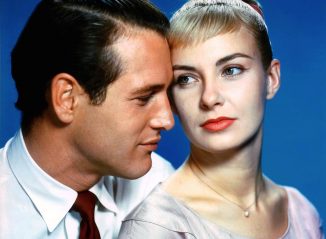
And, on this day in 1958, actors Paul Newman and Joanne Woodward began their storied marriage saying ‘I do’ to a partnership—rare for Hollywood superstars—that lasted 50 years, until Mr. Newman’s death ten years ago. The two co-starred in 11 films, including The Long, Hot Summer in 1958, which led to their marriage—and a family in Connecticut with three daughters.
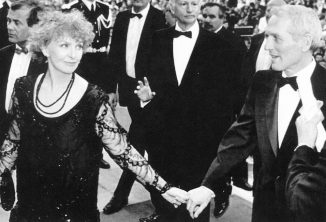
As humanitarians, Newman and Woodward established The Hole in the Wall Gang Camp 30 years ago, a nonprofit camp that has welcomed free of charge every year 20,000 children and their families who are coping with cancer or serious illness.
And, on this day in 1929, Dorothy Harrison Eustis established The Seeing Eye in the US, the first school organized to train dogs to assist the blind. By the end of her first year, 17 blind men and women had gained independence because they were alongside their “Seeing Eye dogs” (a trademarked name). Founded in Nashville, today The Seeing Eye, is located in Morristown, New Jersey, and last year the nonprofit group reached a milestone pairing their 17,000th partners. And, the cost is the best part.
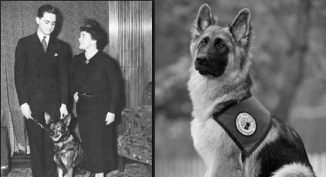
The cost for one of their life-changing service dogs has remain unchanged since the early 1930s: The Seeing Eye tuition is $150, and just $1 for veterans of the military, which covers the dog, its equipment, travel expenses, room and board and specialized training in the care and use of their dog.
And, 138 years ago today, Karl Benz patented the first successful gasoline-driven automobile. The Benz Patent-Motorwagen was built in Karlsruhe, Germany, designed to be propelled by an internal combustion engine with an original cost of around $150 (equivalent to $4,268 today).
Benz’s wife, Bertha, financed the development of the 3-wheeled automobile, which had a rear-mounted engine and many new inventions. The steel-spoked wheels and solid rubber tires were Benz’s own design. Steering was by way of a toothed rack that pivoted the unsprung front wheel. Fully elliptic springs were used at the back along with a beam axle and chain drive on both sides. A simple belt system served as a single-speed transmission. The chassis was improved in 1887 with new wooden-spoke wheels, a fuel tank, and a manual leather shoe brake on the rear wheels.
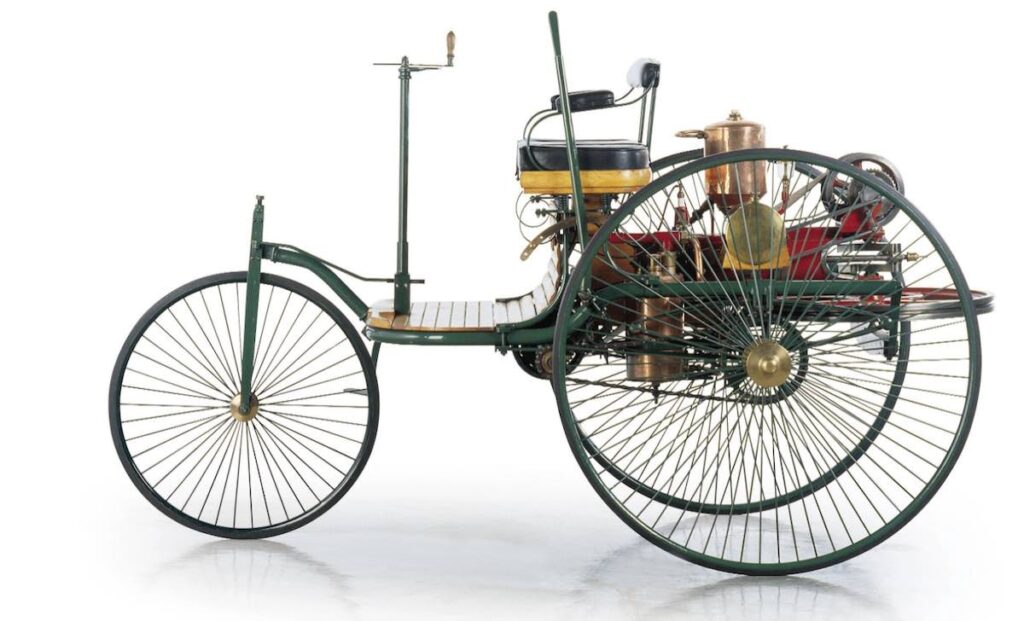
Wanting to demonstrate its usability to the public, Bertha, without telling her husband, drove the Patent-Motorwagen No. 3 on the first long-distance auto road trip with her two sons on August 5, 1888. It took the 39-year-old 12 hours to reach her parents’ house 65 miles away.
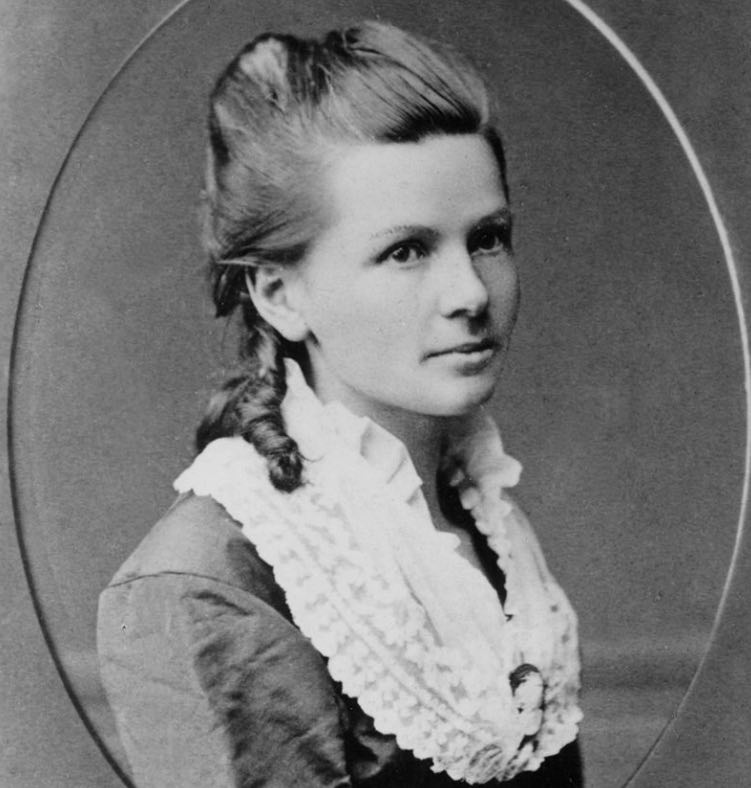
The round-trip route today, (121 miles/194km) from Mannheim to Heidelberg to Pforzheim and back, is marked with official government signposts as a Heritage Scenic Route—and the ‘Bertha Benz Memorial Route’ is traveled by a parade of antique automobiles celebrating her historic trip every two years. WATCH a dramatization of what happened when she ran out of gas! (1886)
With no fuel tank and only a 4.5-liter supply in the carburetor, the trailblazing woman had to find ligroin, the petroleum equivalent needed for the car to run, which is how the pharmacy in Wiesloch, Germany, became the first gas station in the world. Bertha’s pioneering road trip attracted worldwide attention and brought her husband’s inventions the promotion they needed to succeed.
Also, 179 years ago today, Edgar Allan Poe’s iconic poem The Raven was first published. Printed in the New York Evening Mirror, it made Poe a household name almost immediately, and turned the writer into a national celebrity. The narrative poem depicts a mysterious bird’s midnight visit to a distraught lover.
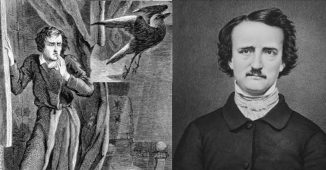
Noted for its musicality and supernatural ambiance, the talking raven accompanies the man’s slow descent into madness. Poe wanted to create a poem that would appeal to both critical and popular tastes, so he used plenty of rhyme, alliteration, and repetition—a constant use of the word ‘Nevermore’.
Though it made Poe popular in his lifetime, and resulted in invitations to recite The Raven and lecture in public and private social gatherings, it did not deliver financial success—even though evermore one of the most famous poems. READ a short excerpt…
(The opening stanza)
Once upon a midnight dreary, while I pondered, weak and weary,
Over many a quaint and curious volume of forgotten lore—
While I nodded, nearly napping, suddenly there came a tapping,
As of some one gently rapping, rapping at my chamber door.
“‘Tis some visiter,” I muttered, “tapping at my chamber door—
Only this and nothing more.”
(More lines)
Nothing farther then he uttered — not a feather then he fluttered —
Till I scarcely more than muttered, “Other friends have flown before —
On the morrow he will leave me, as my hopes have flown before.”
Quoth the raven, “Nevermore.”
The name of the professional American football team Baltimore Ravens was inspired by the poem, chosen in a fan contest to honor the hometown of Edgar Allan Poe, who spent his early career in the Maryland city—and was buried there four years after the famous poem was published. (1845)
SHARE the Milestones, Memories, and Movie Stars…




















